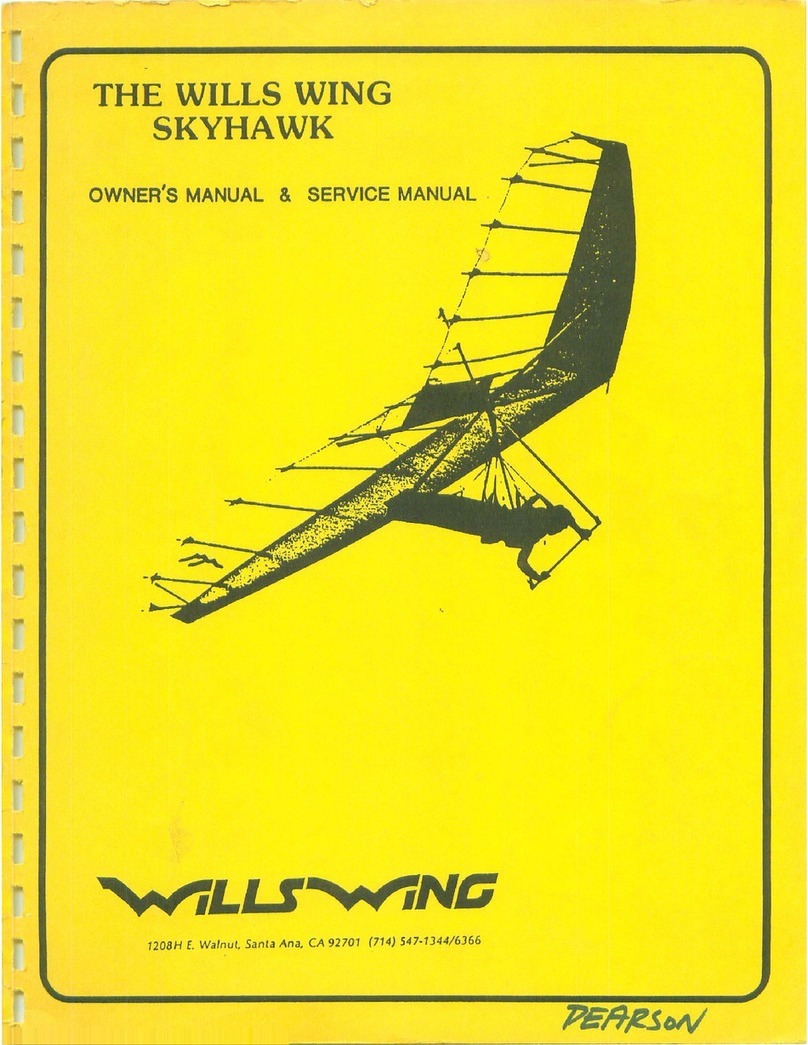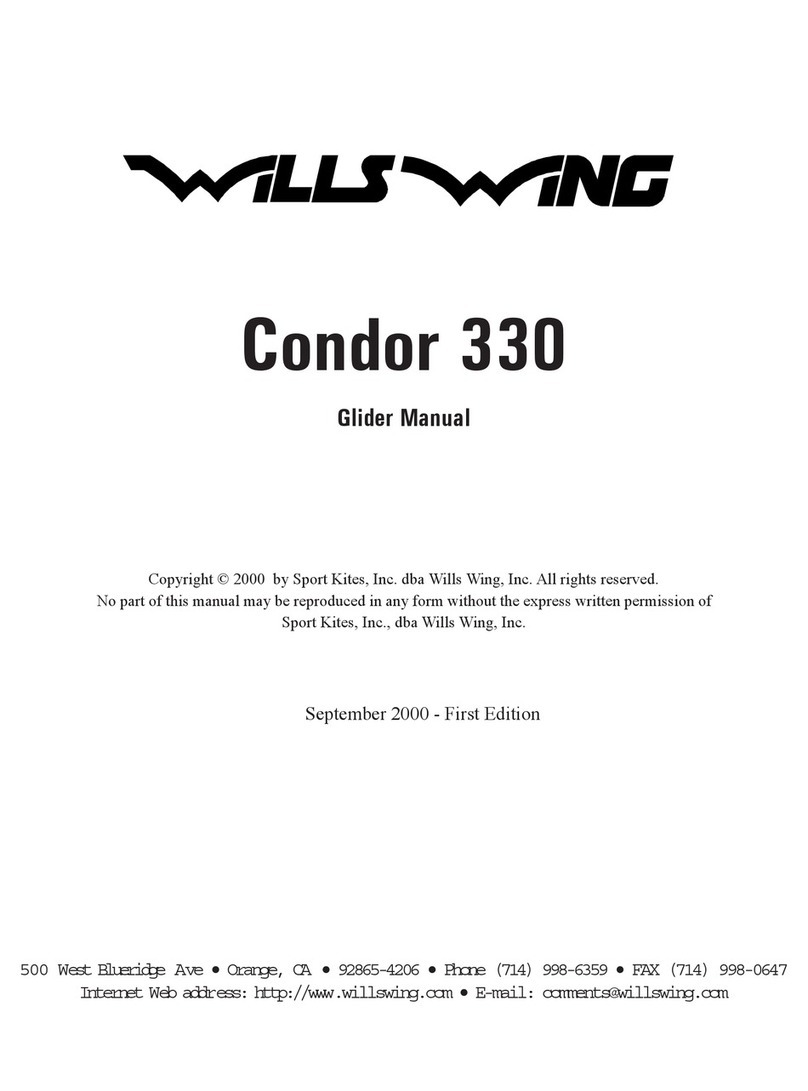
— 4 —
be USHGA skill rated for towing, and should avail themselves of all available information on the most
current proper and safe towing procedures. Suggested sources for towing information include the United
States Hang Gliding Association and the manufacturer of the towing winch / or equipment being used.
Wills Wing makes no warranty of the suitability of the glider for towing.
Because of the design of the nose catch for the bottom front wires on the T2 it is critically important that
the nose line be attached properly during platform towing operations. In no case should the nose line be
attached in such a way that there is any possibility that the nose line can pull forward on the nose wires,
nose tang or nose tang handle, or, in any other way, contribute to disengagement of the nose wires. Please
read the section on towing for more information.
Because of the lack of a kingpost and top rigging on the T2 design, tethering the glider by the nose, such
as is commonly done during platform towing operations, creates the potential for overloading the keel
tube of the glider which could result in a structural failure. To avoid overloading the keel, any tether line
attached to the nose should pull as much as possible in line with the keel, and in no case in a direction
more than 45 degrees below the line of the keel tube itself. Please read the section on towing for more
information.
Flight operation of the T2 should be limited to non aerobatic maneuvers; those in which the pitch angle
will not exceed 30 degrees nose up or nose down from the horizon, and the bank angle will not exceed 60
degrees. The T2 can be induced to spin at any VG setting. At VG settings of less than 50% (VG middle
or looser) the T2 is moderately resistant to spinning, and has spin and spin recovery characteristics that
are typical for other Wills Wing high performance ex wing gliders. At VG settings greater than 50%
(VGM to VG full tight), the T2 becomes progressively and rapidly more susceptible to spinning, and the
spin characteristics and spin recovery characteristics become markedly more extreme. In the most ex-
treme case, a spin entry at VG full tight (VGT), initiated by a rapid pitch up to a signicantly nose high
attitude, the spin response will be a very sudden and abrupt spin with a very high rotation rate and a ten-
dency towards a very nose down attitude. Any spin and / or the recovery from the spin involves a signi-
cant possibility of a total loss of control of the glider, including in ight inversion and possible structural
failure. The probability of this result increases with the abruptness of the spin entry, the abruptness of the
spin recovery, and the percentage of VG that is on when the spin is performed.
Recovery from a spin requires unstalling of the wing, and it is therefore critically important that in the
event of a spin, no application of nose up pitch control be held. The T2 will tend to recover from a spin
once control pressures are relaxed. To recover from a spin, move to the center of the control bar and gen-
tly pull in to position the basetube below your shoulders. Do not pull in rapidly and do not “stuff” the bar.
As the nose lowers and the angle of attack is reduced, the stall will be broken and the spin will stop. In an
aggravated spin, be prepared for the nose to pitch down signicantly, and for the glider to accelerate to a
high speed during the resulting dive. Ease the control bar out gently to recover to level ight. Recognize
that such recovery will consume signicant altitude, and will result in the glider assuming an unpredict-
able heading and attitude. Recovery from a spin at low altitude or in the vicinity of terrain or other aircraft
may involve a ight trajectory, which intersects the terrain or another aircraft at a high rate of speed. In
view of the unpredictable nature of spins and spin recovery, Wills Wing recommends that no attempt
should ever be made to deliberately spin the glider. The T2 provides the pilot with a high degree of pitch
authority, in combination with a very low twist sail. As a result, it is possible to produce a very aggravated
and severe stall, the recovery from which may involve very severe pitch down rotation, the pilot going
weightless, and the glider recovering via an unpredictable trajectory with a signicant altitude loss. There-
fore, aggravated stalls should not be induced except on landing are. Due to the increased sharpness of





































